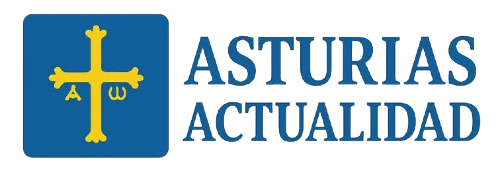Visits to the Planetarium, talks, telescope concentration, and more activities will host the event
The Councilor for Institutional Relations in the City Council of Gijón, Jorge González – Palacios, presented this Friday the program ‘Gijón: Sun and Eclipses’, which includes a series of activities as it is a «privileged» city to observe the eclipse of 2026.
González – Palacios explained that in the coming years 2026, 2027, and 2028, three solar eclipses will cross the Spanish territory, in what is called the ‘Iberian trio of eclipses’. The one in 2026 is particularly important, where Gijón will have a «very, very, very special» role, he highlighted.
He made these statements at a press conference in the Gijón City Hall, alongside ICTEA director Javier de Cos; Omega Association representative Santiago Gándara; Colegio de Ópticos Optometristas representative Óscar López; and Deputy Mayor and Councilor of Economy, Employment, Tourism, and Innovation, Ángela Pumariega.
In this regard, he noted that Gijón will likely be the most privileged place in Spain, or even the world, to observe the eclipse. Consequently, the city will be completely dark on August 12, 2026, between 8:29 and 8:31 pm. During those two minutes, the eclipse will be total.
While there are other Spanish cities that seem well positioned to see it, everything indicates that Gijón will be the best place to do so. For this reason, the Gijón City Council, with the initiative of the Omega Association, wanted to propose a «absolutely necessary» outreach task from the outset, while also leveraging it as a tourist attraction.
In this sense, he mentioned that on March 29, there will be a partial solar eclipse, a moment they consider suitable to position themselves for 2026 and turn Gijón into the eclipse capital.
As part of the outreach activities, with the collaboration of various entities and organizations, on March 28 and 29, Gijón will host conferences, visits to the Planetarium, exhibitions, and an activity to observe the partial eclipse, which will be on Saturday morning, March 29, through space telescopes. There will also be a hybrid meeting, both in-person and online, of the National Eclipse Committee.
The councilor emphasized that all activities will be free and open to public participation. Additionally, he mentioned that the program aims to disseminate, inform, and, above all, prevent, as observing eclipses requires following necessary ocular health recommendations and doing so safely, with approved glasses or specific tools.
On this matter, he explained that, thanks to the involvement of the Colegio de Ópticos de Asturias, they have a list of practical tips, which will also be shared in a talk by Óscar López, a member of the Asturias Delegation of the Colegio de Ópticos Optometristas de España, on the topic.
De Cos, on the other hand, highlighted that an astronomical show will be visible that «will surely enchant everyone,» he opined. Given the limited capacity, he mentioned that the idea is for the City Council to provide a website to reserve spots for the Planetarium. He added that it is expected that 80 or 90 people from MIT in Massachusetts (United States) will attend the event. Furthermore, he emphasized that they have had a hotel reservation for almost a year, as it is not an event that is easy to witness. He also emphasized that there are many places in Gijón to view the eclipse, such as Cerro de Santa Catalina, San Lorenzo Beach, and many more locations to enjoy the event «in its entirety and to the fullest extent.» He advised, however, to take precautions to avoid eye damage. From the Omega Association, Santiago Gángara stressed that this 2026 eclipse starts in Northern Siberia and crosses sparsely populated areas, the East coast of Greenland, crosses the Atlantic, and the only populated area to view it is Spain, particularly in the North. He also pointed out that there are many people who follow eclipses, and he ventured that «millions of people will come to see it.» He predicted that «the number of people coming will be exaggerated.» Regarding the eclipse, he explained that Gijón will be a «privileged» location and one of the first in Spain where the shadow enters, at a speed of over 7,000 kilometers per hour. It will enter Gijón at 8:27 pm and will already be in Valencia at 8:32 pm. However, he acknowledged that Gijón has the handicap of the weather. He noted, in relation to this, that from La Coruña to Bilbao, that strip will see the totality of the eclipse, and for a minute, it will be nighttime. He specified that in the case of Gijón, there are places that are not suitable for viewing it. In this case, he emphasized that from Staircase 9 towards Cervigón all are suitable, but from Staircase 9 towards San Pedro, there are buildings that make it difficult. Gángara also emphasized the importance of communicating the danger to the eyes, pointing out that the rules for observing the sun are «simple, straightforward, inexpensive, but you cannot make mistakes.» On another note, the National College of Opticians emphasized that optical shops will be points where approved glasses can be purchased to observe the eclipse. In fact, they mentioned that they are finishing preparing them and added that they have now brought 500 for this first general rehearsal, which will be the eclipse next month.

